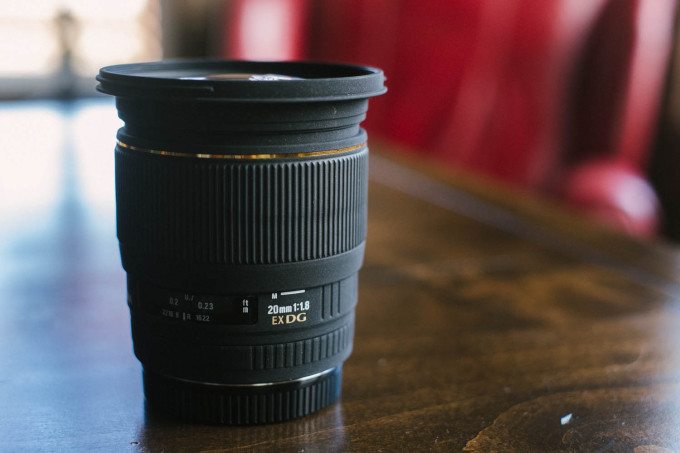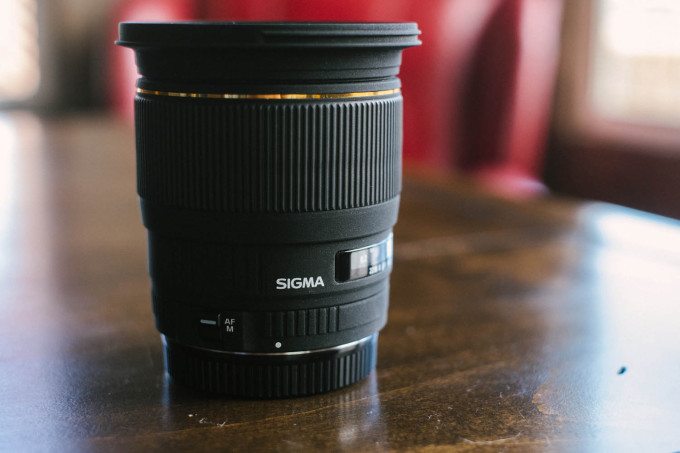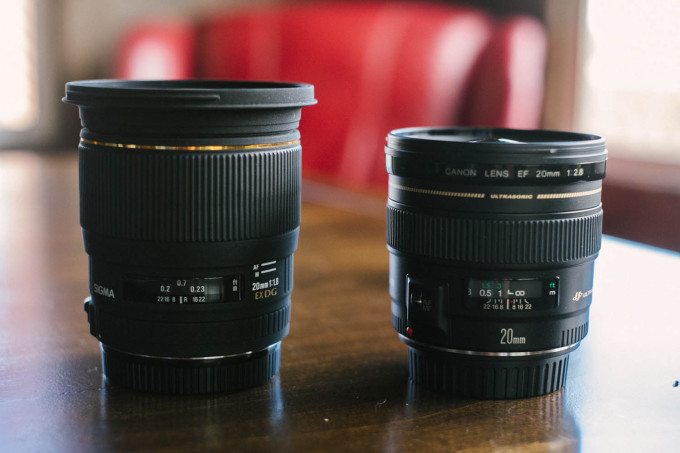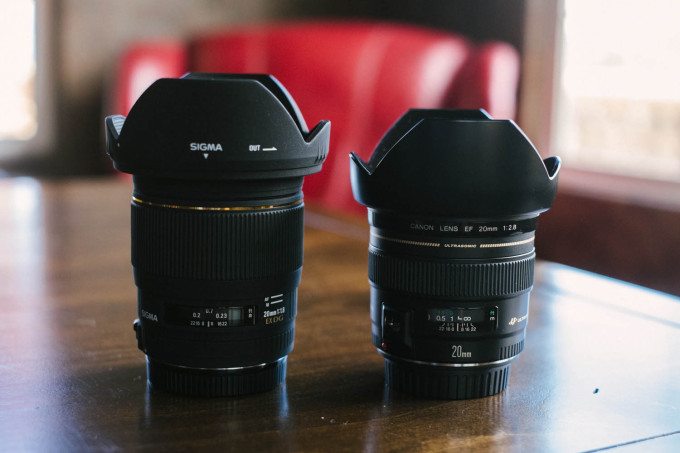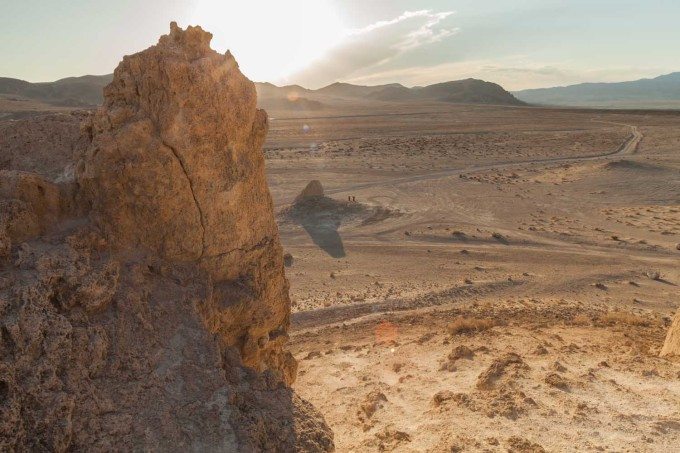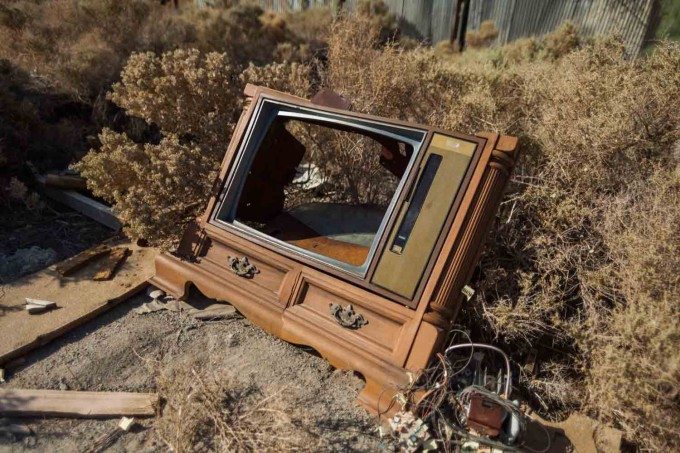Last Updated on 06/18/2013 by Gevon Servo
We here at The Phoblographer are generally big fans (and advocates) of using prime lenses on our cameras; this is not to say that zooms do not serve a purpose (because they absolutely do) but for most of us here, our favorites tend to be of the fixed focal length variety. The Sigma 20mm f1.8, which has been around for some time (insert original launch date) and has still faced no direct challenger for lens speed, with the exception of the $7250 Leica 21mm f1.4 Summilux-ASPH for M-mount cameras, which is an entirely different monster all together.
And in general, we found this lens to be quite the performer.
Pros and Cons
Pros
- Only lens wider than 24mm and faster than f/2 for full frame DSLRs
- Reasonably light weight
- Good overall image quality past f2.8
Cons
- Image quality wide open isn’t that spectacular
- AF motor is loud & buzzy (unsurprising given the age of the lens)
- 82mm filters aren’t entirely convenient
Gear Used
Sigma 20mm f1.8 EX (Canon mount)
Canon EOS 5D Mark II
Tech Specs
Taken from Adorama’s Product Page
| Construction | 11 groups /13 elements |
| Angle of view | 94.5° |
| F stop range | 22 |
| Closest Focusing Distance | 20cm / 7.9″ |
| Maximum Magnification | 1:4 |
| Filter Size | 82mm |
| Dimensions (Length x Diameter) | 88.5 x 87mm / 3.5 x 3.4″ |
| Weight | 520g / 18.3oz. |
Ergonomics
Lenses are pretty straight forward when it comes to ergonomics as there aren’t a whole lot of parts to worry about. The focusing ring doubles as the lens “clutch” and you have to pull it towards you to engage manual focus.
Once you pull the ring towards you, you’ll notice that it is engaged on the “M” line which means it’s ready for manual focus. That is after…
…you toggle the AF / M switch to M, then you will be able to manually focus the lens. I actually liked the feel of the focusing ring once it was in manual, it felt very precise and close to a true manual focus lens.
When comparing the physical size of the lens to the Canon 20mm, this Sigma is noticeably larger than the Canon…
…especially once you mount the lens hoods, then it becomes even more noticeable. Overall though, it’s still a lot more compact than your typical pro zoom lenses.
Build Quality
Sigma’s older EX lenses feel fairly well made with no loose parts or rattles to speak of. Additionally, I always appreciated that Sigma includes lens hoods and decent carrying cases with their lenses, something that first party lens-makers don’t always do. The lens barrel feels sturdy in the hand and the mount is completely solid when it’s on-camera (no wiggle at all). The focusing ring is nicely ribbed and easy to use, and it also doubles as the clutch for the focusing mechanism (after toggling the switch on the lens barrel). Personally I was never really a fan of Sigma’s “crinkle finish” on their EX lenses, and I’m not afraid to say that I’m glad they’ve moved away from that in their newer lens designs. The reason I was never a fan is because the finish tends to scuff pretty noticeably after a reasonable amount of use. It looks pretty ugly after a while. I realize this is a cosmetic matter, but I still find it important to have a durable finish on your lenses.
Autofocus

Considering that this is one of the older lenses in Sigma’s lineup, prior to their development of HSM (Hyper Sonic Motor), it is not as fast nor as quiet as their current lenses, but I found it to be adequate for most uses considering it’s an ultra-wide lens, it doesn’t have too far to go throughout it’s entire focusing range. Accuracy-wise I didn’t have any real trouble locking onto anything, even with the antiquated AF system found on my 5D Mark II bodies. In low light, having f1.8 available was really useful as the lens was able to focus just as quick as it could in daylight.
However I did come across an issue which really had me concerned; while using the lens in the desert for a shoot, I was out in 105º+ temperatures and after about 1 hour, the autofocus motor completely stopped working. Dead. It would just whirr and make noise but it couldn’t focus. I had to switch it into manual focus (which still worked just fine) in order to use the lens at all. After several hours, and after the temperature had cooled (down to the high 80s) the AF motor finally began to work again, and continues to work at this point. It is entirely possible that this issue was only related to the copy I was testing, but there wasn’t sufficient time to try out another copy. Sigma assured me that this was only related to this particular copy and wouldn’t be a widespread issue with other copies of this lens, additionally they let me know that “all of Sigma’s more recent lenses are constructed with Thermally Stable Composite (TSC) polycarbonate materials, which now provide an extra layer of protection against extreme temperatures”. It is worth mentioning that I own two of Sigma’s more recent lenses (the 35mm f1.4 and 85mm f1.4) and neither one experienced the same issue when exposed to the same heat.
Ease of Use
Lenses are easy to use, in a technical sense, but from a focal length standpoint, a 20mm lens can actually be quite challenging if you are unfamiliar with properly using ultra wide angle lenses. Sigma’s older lenses that did not have the HSM motor required activating the the AF/MF switch and pull back the focusing ring to enable manual focus. If you do not first do the toggle switch and you just pull back the ring and then try to focus, you will strip the gears and potentially damage the lens; it’s just something to be aware of. As far as usability is concerned, a 20mm lens is very wide angle of view and not one to just slap on your camera and go (well I suppose you could, there are no “rules” in photography). A lens this wide requires at least some measure of thought as to how you’re going to frame the image and how close you’re going to be to your subject. The nice thing is that because it is so wide, you can get away with a slower shutterspeed than usual, and you can use the lens in rather low light thanks to its fast aperture. Additionally, ultra-wides tend to have greater depth of field which means you’re going to naturally have a lot more actually in focus than something like a fast 50mm lens. Overall, it’s not hard to use, you just have to be sure to follow the order of things for switching between manual and autofocus, as far as using 20mm as a focal length, that is entirely up to you, but it is one that I am fairly familiar with and comfortable with so I really had no problem heading out with this lens, get close and get the shot.
Image Quality
I’ll be up front about this one – I did not really have the highest expectations for this lens as it was one of Sigma’s older models. Times have changed, and Sigma has put a lot of effort into the design of their latest optics, which far outperform their earlier offerings in my opinion. An autofocus 20mm f1.8 is still to-this-day something unique and has not been attempted by the other lens-makers. I suspect they feel one doesn’t need this fast of an aperture with this wide of a lens. In most cases, I agree as ultra-wides tend to be used most often stopped-down, but for a photojournalist that prefers primes to zooms, this is actually potentially an incredibly useful lens. If it is something that bothers you, this lens does vignette pretty significantly wide open, but it’s pretty much gone by f4, personally this doesn’t bother me, as I’m used to it from my own Canon 20mm f2.8 lens, but I felt that it was worth mentioning.
Bokeh
This lens has no bokeh. None. The reality is that a 20mm lens, even one that opens to f1.8 would not be the first lens I’d choose for creating buttery-smooth backgrounds. The reason for this is due to the immense depth of field that this lens has (which I mentioned earlier). If you get right up into your subject’s personal space it is possible to get some sort of bokeh, but it’s not really a practical application in most situations. Honestly though, I wouldn’t even consider this a con, it’s just not what this lens was designed to do. When you do manage to get some kind of bokeh out of this lens, I found it to be a bit busy and not terribly pleasant overall. However I’ve seen this characteristic present in far more expensive lenses such as Canon’s 24mm f1.4L II.
Sharpness
At f1.8 this lens is pretty weak, I’ll admit. The center sharpness is ok, but the corners are a complete wash. I would consider that aperture to be more of a novelty or an emergency, not something I would use with regularity. By f2.8-4 things are overall much better, but the corners don’t really sharpen up until f8, again this is something that I’m used to with my own Canon 20mm, but I was hoping that this lens would have delivered more in the sharpness department. That being said, if you just use the lens and don’t worry too much about measuring corner sharpness and all that nonsense, then this lens will allow you to shoot in lower light than any other autofocus wide angle lens on the market.
Color Fringing
There will be some fringing in high contrasts scenes, particularly on tree branches, but it is SO easy to take care of thanks to today’s RAW processing software (Lightroom has a profile for this lens and takes care of the Chromatic Aberrations in a split second). It’s there, but it shouldn’t be an issue because it is just so easy to remove without even degrading your image quality.
Distortion

The Sigma 20mm does have some barrel distortion which can be corrected with the lens profile inside of Adobe’s latest software (provided that you shoot RAW files). The distortion is not what I would consider to be extreme, but you’ll notice it once it’s been removed. Additionally, if you give yourself enough room in your frame you can utilize the new perspective correction filters within Lightroom 5 with reasonable success.
Color Rendering
I found the tones to be on the cool side with this lens, not unnaturally so, but enough to be noticeable. Again this is also an incredibly easy and quick fix within any RAW processing software; though you may find that you prefer the cooler colors! I just have a predisposition towards warmer tones. One thing this lens is lacking in is overall contrast, it’s a fairly low contrast lens, so if you like your images to have some punch, you are going to have to add it in manually after the fact.
Extra Image Samples
Conclusions
So, what we have here is an older lens that is still unique in today’s market, but one that is outpaced by today’s digital camera sensors. It simply cannot keep up with the high resolution demands of full-frame sensors. I respect Sigma for making a lens that no one else has tried to make, and I am generally a sucker for shooting in low light, probably an area where this lens would excel. I didn’t have the highest expectations for this lens given its age, and while it didn’t deliver outstanding sharpness at all apertures, it did deliver pretty solid center performance from f2.8 onwards, but then again, so does my Canon 20mm f2.8 (which comes in cheaper than this lens). Speaking personally, I’m going to stick with my Canon lens in this case, as I don’t need speed when it comes to ultra-wides, but if you do, then there literally is no other choice! I would say in all honesty that this is a good, but not great, lens as Sigma’s more current offerings far exceed the capabilities of this old-timer. None of this really surprises me, but I would hope that they will address this lens in the future as they continue to upgrade their lineup. If you’re interested in purchasing your own copy of this lens, both Adorama and Amazon keep them in stock. Besides the Canon EOS version that I tested out, this same lens is also available in Nikon, Pentax, Sony / Minolta and Sigma mounts, plenty of options.
Please Support The Phoblographer
We love to bring you guys the latest and greatest news and gear related stuff. However, we can’t keep doing that unless we have your continued support. If you would like to purchase any of the items mentioned, please do so by clicking our links first and then purchasing the items as we then get a small portion of the sale to help run the website.




